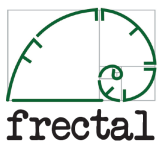Change- advancing with Technology and Standards
Another recurring pattern within change is the role of tools to drive and support change.
Effective tools are often a critical element in successful change. One of those things that make us human is that we develop tools to help us solve problems. That began with making stone tools in the stone age, iron tools in the iron age and so on to the present day. So tools are an integral part of human life and key to our progress as a human species. In modern times tools are now referred to as “technology”, but this is simply a change in terminology.
Standards are also introduced here as standards are the embodiment of tools/technology that can be reused so we examine them in this context. Again there are many examples of standards in action that have transformed our world e.g. the Greenwich Mean Time and related times standards, the Metric measurement systems, the HTTP standard that powers the Internet etc etc.
Let us now examine the evolution of tools/technology/standards from another end of the Cynefin spectrum.
Simple
As tools are developed initially to meet a local need they often have simple origins (e.g. the reuse or revision of an existing tool to solve a new problem). For instance man once considered the use of the wheel an amazing breakthrough. Not that it was devised by a committee, it humble origins likely sprang from a diverse set of needs before playing a new role in transportation.
Complicated
Given the right foundations then simple building blocks can produce pretty complicated machines. Over time simple single individual tools became assembled together to produce even more complicated tools, e.g. the chariot, the train, the car etc. If such building blocks are adequately reusable (e.g. cogs in a gearing system) then they can scale up to very complicated environment (e.g. Boeing 747) In this context a airplane is considered a complicated not a complex system as all the component parts are known and predictable in their actions.
Complex
Complex systems however are an order of magnitude more challenging than complicated systems. We have already seen good examples of complex systems being successfully engineered. Here the principles are that one cannot control and understand the whole system but by if one engineers a few key components the rest will self organise.
Here the best examples may come from the development of the World Wide Web and/or open source projects (e.g. Linux), where with the minimum of intervention they have flourished at scale and amidst diversity to drive enormous change and the information revolution we are living through.
Chaos
Starting from a position of chaos towards a complex system, then if enough diversity is encouraged then some successful tools will emerge from the complexity and thrive. However if diversity is not encouraged then any single solution that is forced from the top down into a complex environment may not scale well..
The same principles apply to the field of standards development. If led properly and developed with complex systems in mind then they can be cascaded from the top down. On the other hand if standards development is over complicated and cannot be implemented at the frontline, then as a by-product of the diversity defacto standards can emerge from the bottom up (e.g. QWERTY keyboard, VHS tapes, Linux operating system).. a point to which I will return later.
We conclude this look at patterns in change, looking at Value..
References
Diamond J (1998) “Guns, Germ and Steel”, Random House, London





Leave a comment